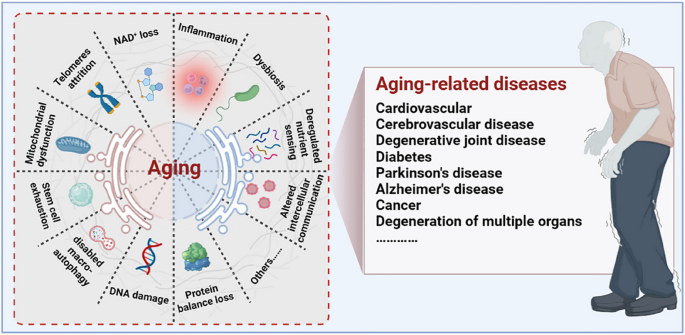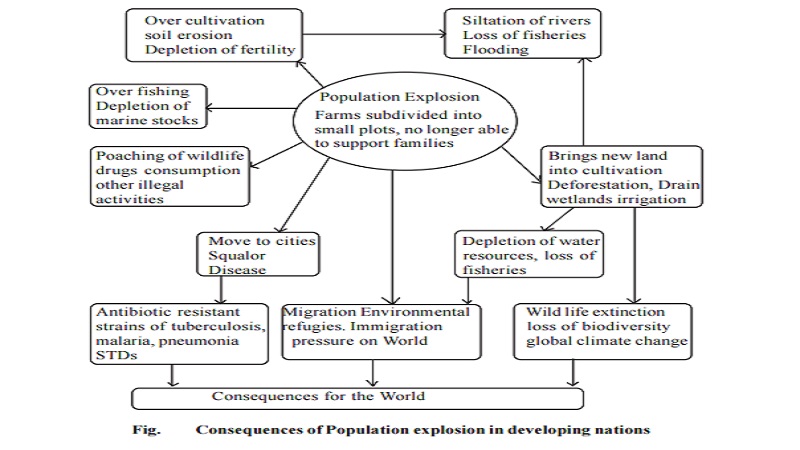The dramatic rise in human life expectancy over the past century is one of humanity’s greatest achievements. Advances in medicine, public health, and technology have transformed life expectancy from an average of 47 years in 1900 to over 77 years in many developed nations today. While these strides in longevity mark significant progress, they also raise critical questions about their broader implications. Is extended life expectancy a catalyst for societal advancement, or does it risk tipping the scales toward overpopulation and resource scarcity?
The future of aging is not to fear it but to embrace it with innovation and foresight.
Aubrey de Grey, Biomedical gerontologist and longevity researcher
This blog explores the societal impact of increased longevity, using insights from scientific studies, including data from PubMed research, to navigate this pressing debate.
The Drivers of Longevity
Longevity, or the extension of average life expectancy, has been driven by several key factors:

- Advances in Healthcare: Improved treatments for infectious diseases, breakthroughs in chronic disease management, and preventive healthcare have significantly increased survival rates.
- Better Living Conditions: Access to clean water, sanitation, and nutrition has enhanced overall health and well-being.
- Technological Innovations: Tools like vaccines, antibiotics, and medical devices have dramatically reduced mortality rates.
As a result, the global population is aging rapidly, with people over 60 becoming the fastest-growing demographic group worldwide. By 2050, it’s estimated that one in six people globally will be over the age of 65.
Longevity and Overpopulation: A Growing Concern
Critics of rising longevity often point to its potential role in exacerbating overpopulation. Extended life spans mean more people sharing finite resources for longer periods. Here’s how this dynamic plays out:

1. Environmental Strain
An increasing population can intensify environmental degradation. More people require more housing, energy, and food, which can lead to deforestation, habitat destruction, and higher greenhouse gas emissions. Climate change becomes harder to combat when resource demand grows exponentially.
2. Economic Challenges
Longer life expectancy creates unique economic pressures. Social safety nets, such as pensions and healthcare systems, must sustain individuals for extended periods, potentially leading to funding shortfalls. Without reform, nations could face economic instability as resources are stretched thin.
3. Urbanization and Infrastructure Stress
As populations grow, urban areas must accommodate larger numbers of people, often leading to overcrowding, inadequate housing, and strained infrastructure. In cities where aging populations dominate, mobility and accessibility challenges may become even more pronounced.
Despite these concerns, it’s worth noting that overpopulation is a nuanced issue. In some regions, declining fertility rates are offsetting the effects of longer life expectancy, leading to slower population growth overall.
The Benefits of Longevity: A Path to Progress
While concerns about overpopulation are valid, increased longevity also represents immense opportunities for societal progress. Here’s how longer life spans can drive positive change:
Longevity is not just about adding years to life, but adding life to years.
Alexis Carrel, French surgeon and biologist
1. Contributions of an Aging Workforce
With longer lives come extended periods of productivity. Older adults are increasingly staying in the workforce, bringing decades of experience and knowledge. This shift could redefine traditional retirement and create new models for intergenerational collaboration.
For example, Japan—a nation with one of the highest life expectancies—has successfully integrated older workers into its economy, demonstrating how an aging population can remain a valuable resource.
2. Advancements in Health and Wellness
Longevity research has sparked advancements in health optimization, focusing on reducing age-related illnesses and enhancing quality of life. Breakthroughs in areas like regenerative medicine, personalized healthcare, and biotechnology promise healthier, more active aging.
3. Greater Intergenerational Bonds
Longer life spans foster stronger connections between generations. Grandparents and great-grandparents play critical roles in family dynamics, offering wisdom, emotional support, and childcare assistance. These bonds enrich cultural continuity and social cohesion.
4. Innovations in Aging Research
The quest to extend healthy life spans has catalyzed cutting-edge research in areas like telomere biology, mitochondrial health, and gene therapy. These discoveries could lead to groundbreaking treatments for age-related diseases, benefiting society as a whole.
Balancing the Scales: Mitigating Challenges
To harness the benefits of longevity while addressing its challenges, societies must adopt proactive strategies. Here are some potential solutions:

1. Sustainable Resource Management
Investments in renewable energy, sustainable agriculture, and circular economies are essential to meet the needs of a growing population without depleting the planet’s resources.
2. Healthcare System Reform
As life expectancy rises, healthcare systems must adapt to focus on preventive care, chronic disease management, and cost-effective treatments. Integrating technology, such as telemedicine and AI diagnostics, can enhance efficiency.
3. Rethinking Retirement
Retirement policies should evolve to reflect longer life spans. Flexible retirement ages, phased transitions out of the workforce, and opportunities for lifelong learning can help older adults remain active contributors.
4. Urban Planning for Aging Populations
Cities must become more age-friendly, incorporating accessible infrastructure, public transportation, and housing designed for older residents.
5. Population Education and Policy
Promoting education about family planning and implementing policies to stabilize population growth can help balance longevity’s effects on demographics.
Longevity in the Context of Global Inequality
It’s crucial to acknowledge that the benefits and challenges of longevity are not distributed equally. In high-income nations, advancements in healthcare and living standards have led to significant gains in life expectancy. Meanwhile, in low- and middle-income countries, disparities in healthcare access and social support often limit longevity.
Bridging this gap requires international cooperation and investment in global health initiatives. Ensuring equitable access to healthcare, education, and resources is essential for achieving a balanced and sustainable future.
Final Thoughts
The societal impact of longevity is a complex interplay of challenges and opportunities. While longer life spans raise valid concerns about overpopulation and resource strain, they also open doors to unprecedented progress in health, productivity, and intergenerational relationships.
As we navigate this new era of aging, the question is not whether longevity is a blessing or a burden but how we can harness its potential while mitigating its challenges. By adopting forward-thinking policies and embracing innovation, humanity can turn the promise of longevity into a cornerstone of sustainable progress.
The path forward lies in balance—honoring the achievements of extended life expectancy while striving for a future where longevity benefits all, equitably and sustainably.
Recent Insights into The Societal Impact of Longevity: Overpopulation or Progress?
“Healthcare System Strain in Aging Populations”
A 2023 study highlighted that increasing longevity has strained healthcare systems worldwide, particularly in managing chronic diseases like diabetes, heart disease, and neurodegenerative conditions. Governments are prioritizing preventive healthcare measures to reduce costs and improve population health outcomes.
Read the full study here.
“Innovative Workforce Strategies Adapt to Longevity”
Research published in 2022 explored how countries with aging populations, such as Japan and Germany, have implemented policies encouraging older adults to remain in the workforce. Flexible work arrangements and retraining programs were shown to boost economic productivity and reduce dependency ratios.
Explore the findings here.
“Urban Planning for Aging Societies”
A 2023 study found that cities adapting to aging populations with age-friendly infrastructure—such as accessible transportation, housing, and healthcare facilities—enhanced the quality of life for older adults. Such initiatives also reduced healthcare costs by preventing injuries and promoting active aging.
Discover more here.
“Longevity and Intergenerational Wealth Transfer”
A 2022 report examined how increasing life expectancy impacts inheritance patterns. Longer life spans delay wealth transfer between generations, influencing savings, investments, and economic mobility. Policymakers are exploring solutions like generational wealth-sharing to balance economic opportunity.
Learn more about this research.
“Biotechnology Drives Healthy Longevity”
Advancements in gene therapy, regenerative medicine, and anti-aging interventions have accelerated the concept of “healthy longevity.” A 2023 study found that these technologies reduce age-related health decline, enabling older adults to live longer, healthier, and more productive lives.
Explore the research here.
“Climate Change and Longevity Intersect in Resource Allocation”
A 2022 analysis revealed that longevity’s impact on resource consumption intersects with climate change concerns. Sustainable resource management and technological innovations are critical to balancing longer life spans with environmental conservation.
Find the details here.
“Social Support Networks Reduce Isolation Among Older Adults”
A 2023 study emphasized the role of community-based programs and technology in reducing loneliness among older adults. Stronger social connections were linked to improved mental health, longer life spans, and reduced healthcare usage.
Discover the insights here.
“Policy Innovations Address Longevity’s Economic Challenges”
Research in 2022 showcased innovative policies like universal basic income and pension reform in addressing economic pressures posed by aging populations. These measures have improved financial security and reduced poverty among older adults.
Learn more about these approaches.
“Artificial Intelligence Optimizes Longevity Research”
AI-driven analysis of health data is advancing personalized medicine for aging populations. A 2023 study demonstrated how AI models predict disease risks and recommend tailored interventions, enhancing both lifespan and health span.
Read the full analysis here.
“Education and Longevity Are Interconnected”
A 2022 study showed that access to education directly correlates with life expectancy. Educated individuals were more likely to adopt healthier lifestyles, participate in preventive care, and contribute to societal progress, emphasizing the importance of education in longevity policies.
Find the research here.
These insights reflect how the societal impact of longevity is a multifaceted phenomenon. Addressing its challenges while capitalizing on its opportunities requires innovative solutions that balance sustainability, equity, and progress.

























